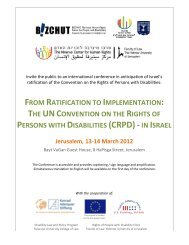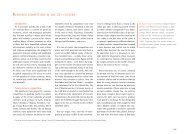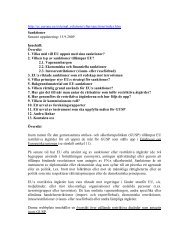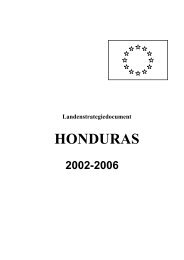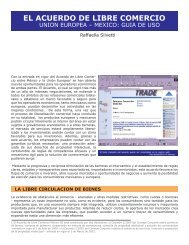Bhutan Country Strategy Paper 2007-2013 - the European External ...
Bhutan Country Strategy Paper 2007-2013 - the European External ...
Bhutan Country Strategy Paper 2007-2013 - the European External ...
Create successful ePaper yourself
Turn your PDF publications into a flip-book with our unique Google optimized e-Paper software.
Per capita income has increased from US$ 51 in 1961 (<strong>the</strong> lowest in <strong>the</strong> world at that time) to US$<br />
870 in 2005, one of <strong>the</strong> highest in South Asia. The country’s real annual economic growth<br />
averaged about 7-8 per cent over <strong>the</strong> last two decades and grew by 6.8 per cent in 2003. 3<br />
Economic growth performance<br />
As mentioned above, hydropower development and <strong>the</strong> export of surplus electricity to India has<br />
largely sustained <strong>Bhutan</strong>’s robust growth and fundamentally transformed <strong>the</strong> structure of <strong>the</strong><br />
country’s economy. The major share of GDP still comes from agriculture, forestry and <strong>the</strong><br />
livestock sector with a share of 21 per cent (SYB-2006). The share of hydropower has been stable<br />
at 11 to 12 per cent of GDP but is expected to increase dramatically once <strong>the</strong> Tala Hydropower<br />
Project comes on stream, probably accounting for 25 per cent of GDP starting in <strong>2007</strong>. In<br />
addition to <strong>the</strong> construction of large hydropower projects, <strong>the</strong>re has been a rapid extension of<br />
road networks, including feeder roads to improve rural access, electricity and telecommunications<br />
facilities for numerous rural households, and <strong>the</strong> fur<strong>the</strong>r development of urban infrastructure. It is<br />
likely that electricity production and construction will remain <strong>the</strong> fastest-growing sectors of <strong>the</strong><br />
economy in <strong>the</strong> years to come.<br />
While <strong>Bhutan</strong> has achieved significant socio-economic progress in <strong>the</strong> last few decades in terms of<br />
e.g. health and education indicators, <strong>the</strong> progress in <strong>the</strong> real economic sector has not been as<br />
impressive. Apart from donor-funded infrastructure works and establishment of hydropower<br />
projects, <strong>the</strong>re has been little growth in <strong>the</strong> manufacturing sector. Rapid social development and<br />
population growth coupled with weak growth in <strong>the</strong> private sector has led to <strong>the</strong> emergence of<br />
new concerns like unemployment, especially youth unemployment, and <strong>the</strong> need for economic<br />
diversification. A major structural problem that <strong>Bhutan</strong> still faces is its heavy dependence on<br />
external assistance.<br />
Debt management and balance of payments<br />
One of <strong>the</strong> major internal limitations <strong>Bhutan</strong> faced in funding its Development Plans was <strong>the</strong> lack<br />
of domestic savings. Prior to 1961, <strong>the</strong> economy was largely based on agro-pastoral subsistence<br />
activities and a barter system within village communities. Since <strong>the</strong> modern banking system was<br />
introduced only in 1968, <strong>the</strong>re were no domestic savings to be mobilised for post-1961<br />
development projects. As a result, <strong>Bhutan</strong> became heavily dependent on external assistance and<br />
hence <strong>Bhutan</strong>’s first three Development Plans were largely financed by India.<br />
Although <strong>the</strong> share of India's funding of Development Plans has decreased over <strong>the</strong> years, India is<br />
still <strong>the</strong> single largest donor to <strong>Bhutan</strong>. The options for <strong>Bhutan</strong> to reduce its dependency on India<br />
and o<strong>the</strong>r foreign aid donors are severely limited due to several domestic constraints. These<br />
include low rates of monetised savings; a small domestic population with a correspondingly small<br />
domestic market and shortage of manpower; <strong>the</strong> immobility of <strong>the</strong> rural labour force; a lack of<br />
skilled labour, and limited trade possibilities due to absence of access to <strong>the</strong> sea and <strong>Bhutan</strong>'s<br />
mountainous topography.<br />
While some progress has been achieved in reducing <strong>the</strong> role of government in <strong>the</strong> economy, <strong>the</strong><br />
public sector contribution is approximately 35 per cent. <strong>Bhutan</strong> follows a policy of earmarking<br />
domestic revenue for current expenditure while external assistance in <strong>the</strong> form of grant aid and<br />
highly concessionary external borrowings is directed to capital projects. While <strong>the</strong> overall fiscal<br />
balance has been in substantial deficit due to government capital spending on <strong>the</strong> new hydro-<br />
3 <strong>Bhutan</strong> National Human Development Report, 2005<br />
4




